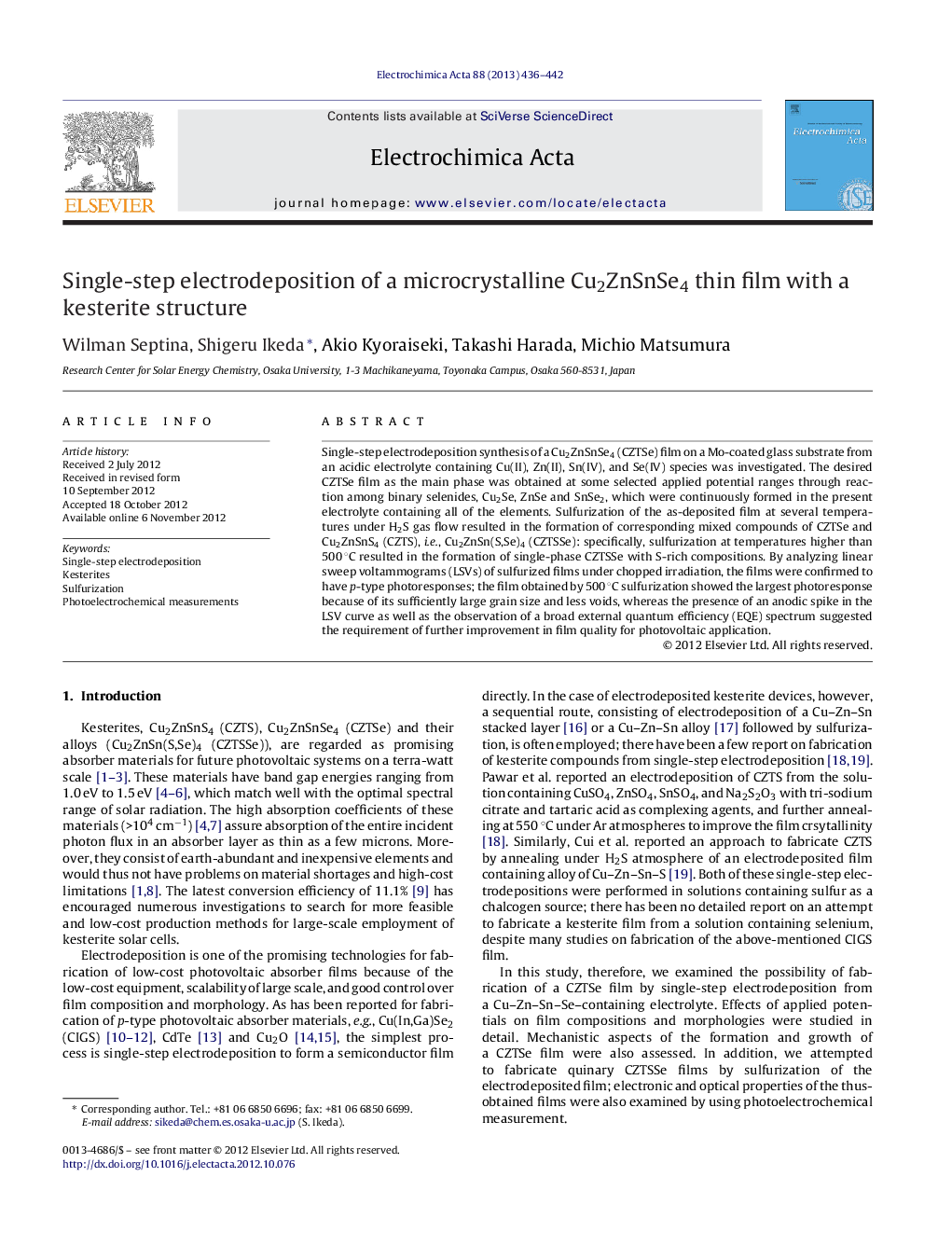| Article ID | Journal | Published Year | Pages | File Type |
|---|---|---|---|---|
| 187722 | Electrochimica Acta | 2013 | 7 Pages |
Single-step electrodeposition synthesis of a Cu2ZnSnSe4 (CZTSe) film on a Mo-coated glass substrate from an acidic electrolyte containing Cu(II), Zn(II), Sn(IV), and Se(IV) species was investigated. The desired CZTSe film as the main phase was obtained at some selected applied potential ranges through reaction among binary selenides, Cu2Se, ZnSe and SnSe2, which were continuously formed in the present electrolyte containing all of the elements. Sulfurization of the as-deposited film at several temperatures under H2S gas flow resulted in the formation of corresponding mixed compounds of CZTSe and Cu2ZnSnS4 (CZTS), i.e., Cu2ZnSn(S,Se)4 (CZTSSe): specifically, sulfurization at temperatures higher than 500 °C resulted in the formation of single-phase CZTSSe with S-rich compositions. By analyzing linear sweep voltammograms (LSVs) of sulfurized films under chopped irradiation, the films were confirmed to have p-type photoresponses; the film obtained by 500 °C sulfurization showed the largest photoresponse because of its sufficiently large grain size and less voids, whereas the presence of an anodic spike in the LSV curve as well as the observation of a broad external quantum efficiency (EQE) spectrum suggested the requirement of further improvement in film quality for photovoltaic application.
► Investigation of a single-step electrodeposition synthesis of a Cu2ZnSnSe4 thin film on a Mo-coated glass substrate. ► Cu2ZnSnSe4 as a main phase was obtained at appropriate applied potential ranges. ► Sulfurization of the as-deposited film at temperatures higher than 500 °C led to the formation of single-phase CZTSSe films. ► Sulfurized films exhibited p-type photoresponses.
